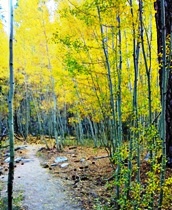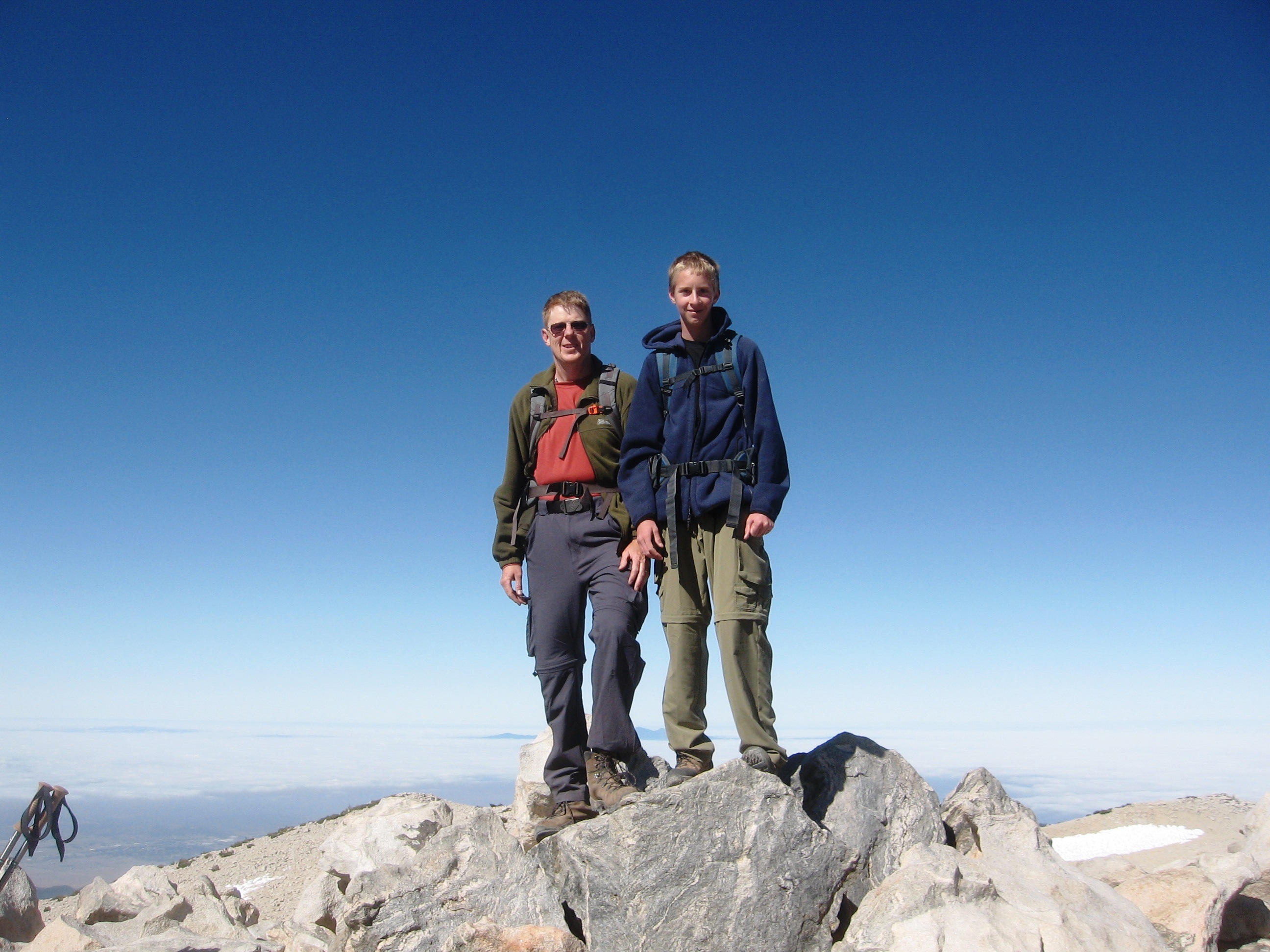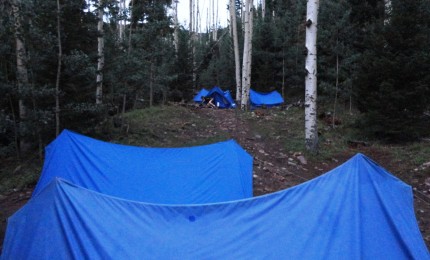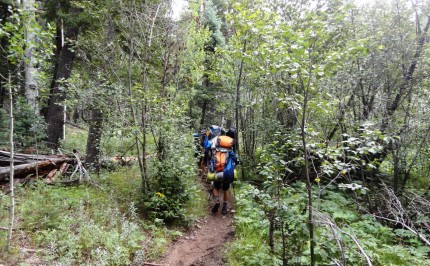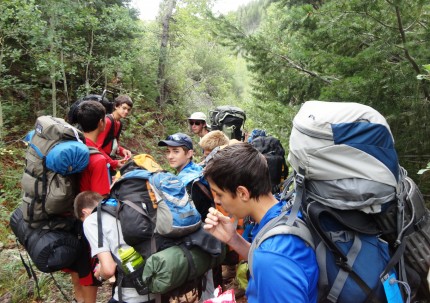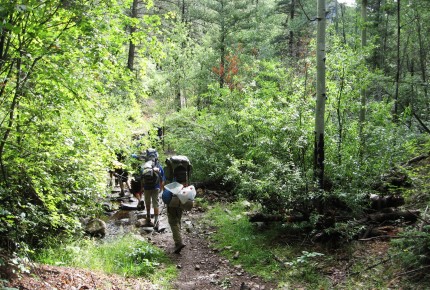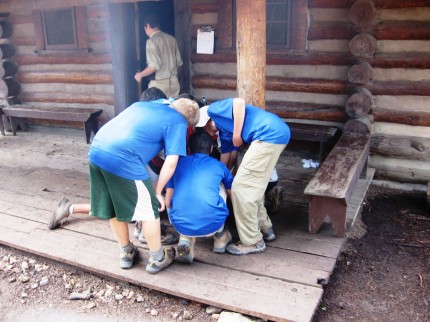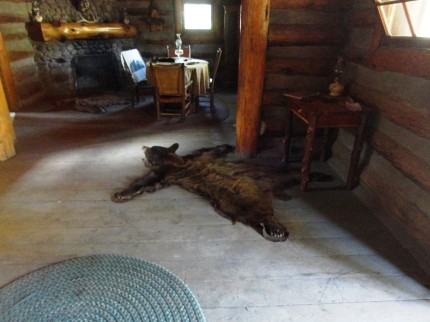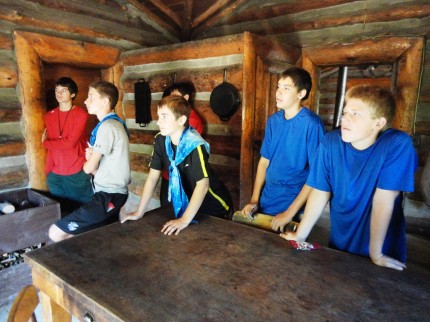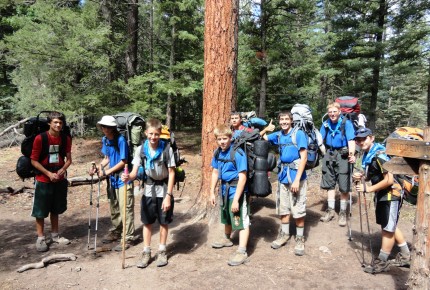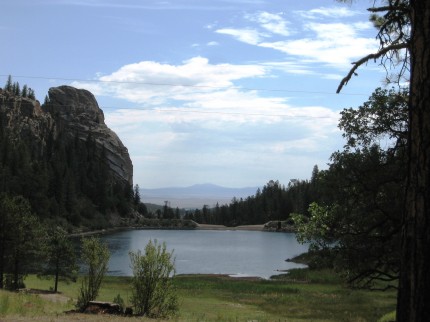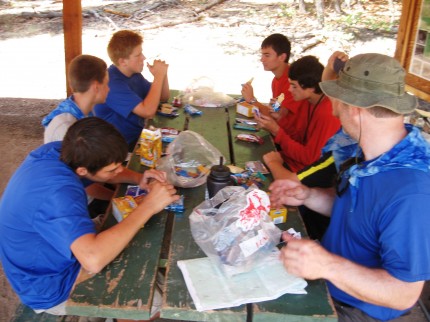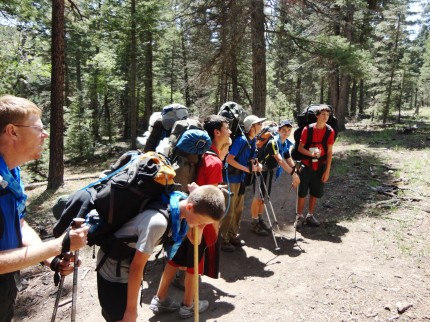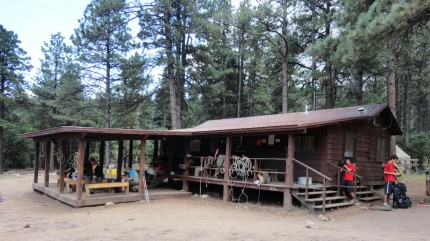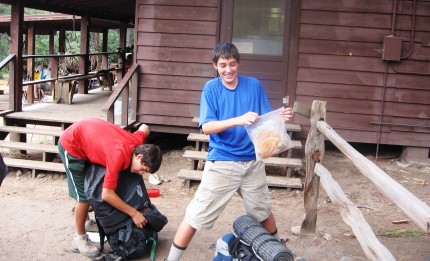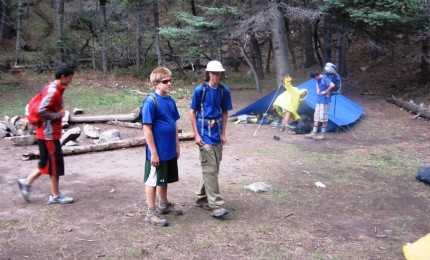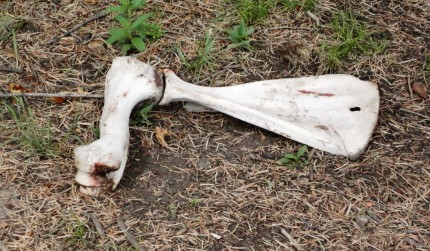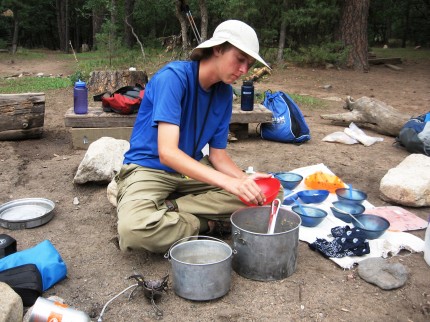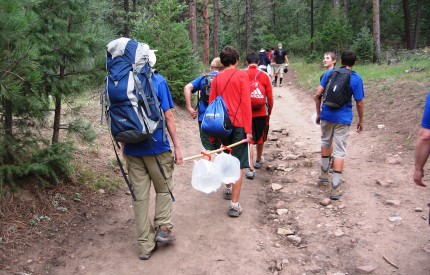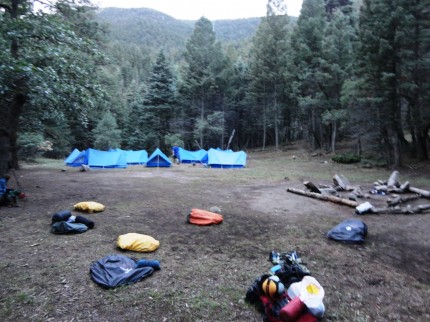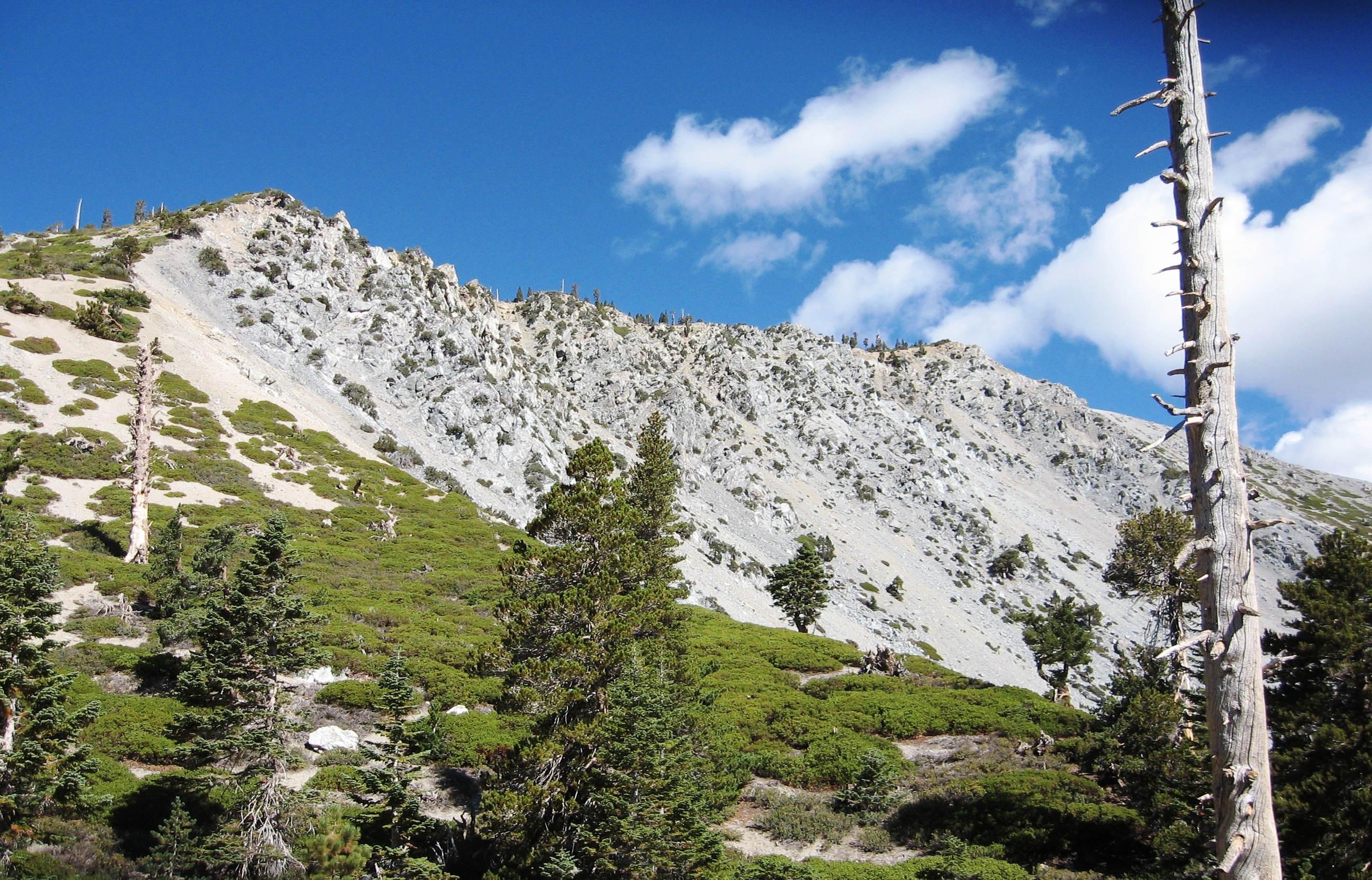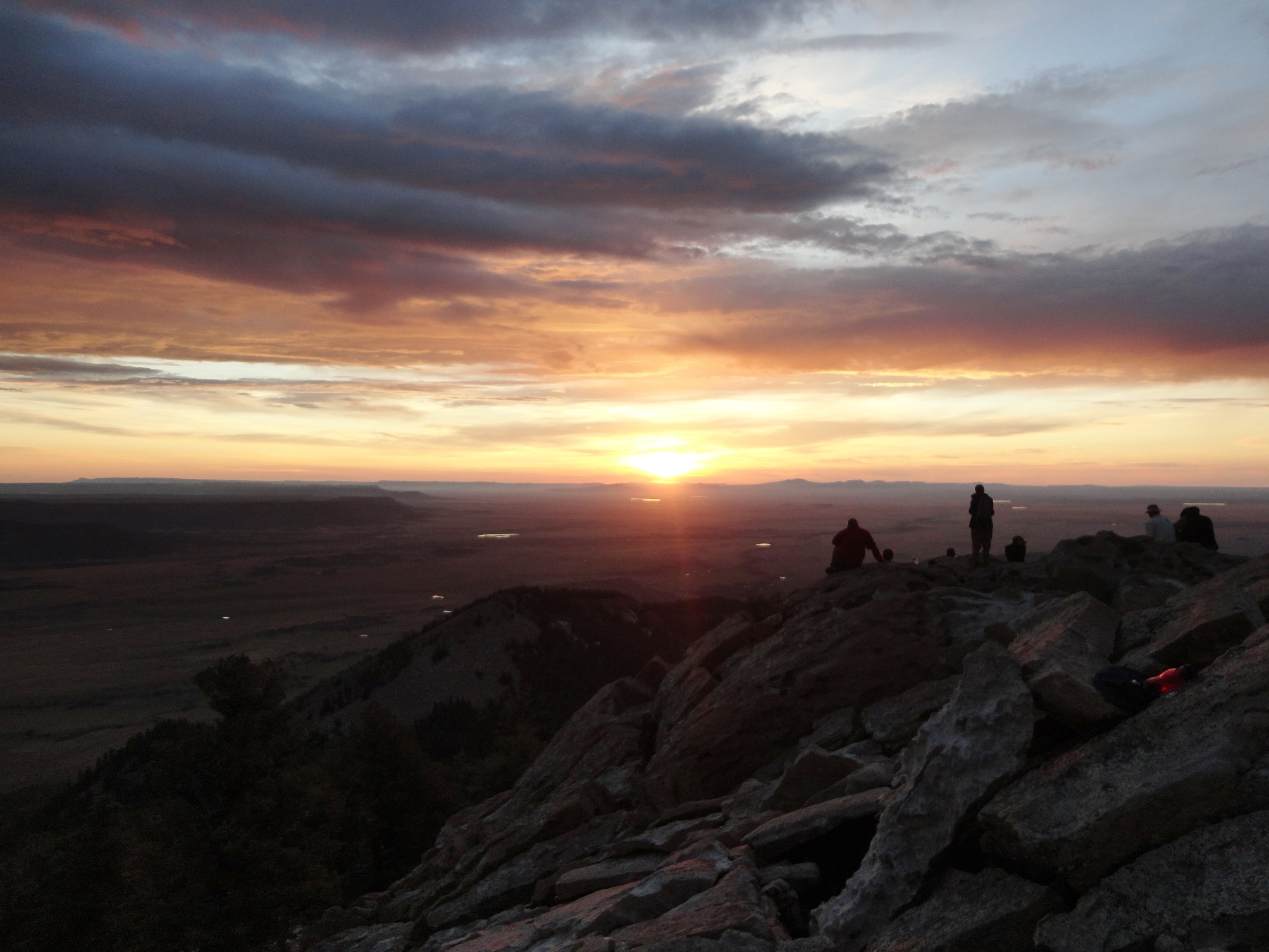Everyone went to bet fairly early the night before so it was easy waking up. In fact, we woke up fairly early. We are nearing the last few nights before heading home so there is a little excitement that we are soon to make it back to base camp. As light hit camp, everyone seemed to get moving.
Soon enough we were on the trail. We were going to be heading down the Middle Fork of the Cimarroncito Creek towards the Cimarroncito Reservoir.
As we traveled we took time to take in the beauty of the area we were as well as eat some of breakfast that was not eaten before we left Lamberts Mine.
As we moved down the canyon we crossed over the creek several times.
We soon came upon our first stop of the morning, the Phillips Hunting Lodge. We put our packs down and the boys made a beeline for the swap box. We guessed breakfast was not enough today. That or they wanted an early lunch.
We took off our shoes and had a tour of the Hunting Lodge. Some curious facts, the windows were high enough and small enough that a bear could not get in. All the doors, interior and exterior were crafted to withstand a bear and they required a thumb which bears do not have to open the door. You never know when a bear may drop by, and if they are in the living room, you are safe in the bedroom.
We got a look at the kitchen as well. A large icebox was in the kitchen for the purpose of storing game animals that had been prepared for the icebox. The stove was wood burning as there was not much else around to fuel a stove in the middle of nowhere.
We got back on the trail and headed south towards Clarks Fork. We came upon a shelter that had posters explaining the demonstration forest. We decided to stop.
There was a nice view of Cimarroncito Reservoir and Cathedral Rock which is on the North side of the reservoir.
EDIT – Over a year after the trip to Philmont, the picture above was used as inspiration for an artist. Dawn Chandler’s blog has a post in regards to her paintings of Cimarroncito Reservoir and Cathedral Rock can be found here.
The tables at the shelter looked like a nice place to have lunch. It was nice to sit at an actual table and eat.
Soon enough we were on our way. The forests showed four different methods of timber harvesting; Patch Cut, Sanitation Cut, Selection Cut and Seed Tree Cut. They had large areas where they did each method of timber harvesting to see the results as compared to each other. As a matter of interest, the shelter was created from wood harvested in the demonstration forest. We stopped at each of the signs along the trail for the Demonstration Forest.
As we approached early afternoon, we came upon the Clarks Fork Staff Cabin. We stopped and got some water there.
One of the boys did a little repacking. He is holding the yum bag. Every time we did the dishes, we strained the dishwater as we poured it down the sump. What was left over in the strainer and on the screen on top of the sump was carefully put into a bag. We carried that bag, with all that yum in it, all the way to this point and would need to carry it all the way back to base camp.
We continued on up to our camp at Upper Clarks Fork. We set up camp and hung our bear bags. We also prepared camp in case it rained because we were going back down to Clarks for to cook dinner and get water. There was also a chess board there and some other activities.
As the boys looked around camp, they found part of an animal that had seen a better day. The thoughts of bears and cougars entered their minds.
The trip back down to Clarks Fork was quick. We needed to get more water as it was the last water we would be able to get before we got back to base camp. Dinner went well. It was Jacobs turn for dishes and he did a methodical and excellent job. As you may remember, before we eat, we dip the dishes in boiling water to sterilize them. That turned out to be a good idea, because there was the fear that the previous night’s residue was still on the dishes.
As the evening wound down, we got our water and headed up to Upper Clarks Fork. Everyone brought their water bottles and we looked like we had plenty of water.
As we were winding down for the evening, a bear researcher showed up to camp. He let us know that there seemed to be three problem bears at Upper Clarks Fork, Schaefers Pass Camp and Tooth of Time Ridge, where we would be staying the next night. He admonished us to be very careful and make sure any smellables were up in the bear bags. He made sure we were camped 50 feet away from the “Bearmuda Triangle” (eating area – sump – bear bags). They had also placed a trap for the bear in the area. He asked that no one get in it if we saw it. The crew next to us did not have much area to put their tents, so they placed them along with ours.

